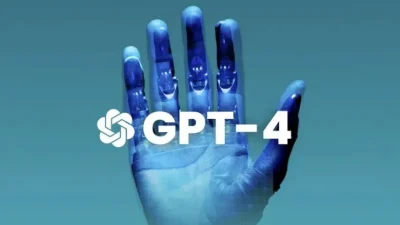One of the common challenges users face while interacting with GPT-4 is managing the response length. Whether the generated output is too short or excessively verbose, optimizing the interaction to achieve the desired response length requires strategic input. This document explores techniques and recommendations for controlling GPT-4 responses and tailoring them to specific requirements.

Understanding GPT-4’s Response Behavior
GPT-4’s responses are influenced by several factors, including:
- Prompt Design. The way a prompt is written determines the length, tone, and focus of the response.
- Model Constraints. GPT-4 has a token limit for processing input and generating output.
- Stop Conditions. Custom-defined stop signals or natural language structures can limit or extend a response.
By understanding these core factors, users can better craft their queries to align with the desired outcome.
Factors That Affect Response Length
Several specific elements impact the length of GPT-4 responses:
- Specificity of the Prompt. Ambiguous or general prompts often lead to shorter responses, as the model may prioritize conciseness. Conversely, detailed and open-ended prompts encourage longer outputs.
- Word Choice. Using terms like “explain,” “describe in detail,” or “summarize” influences the level of depth in the response.
- Formatting Instructions. Explicit formatting requirements, such as requesting bullet points or numbered lists, can result in shorter or segmented outputs, while a narrative style yields more comprehensive text.
- Token Limitations. GPT-4 has a maximum token limit that includes both the input prompt and the output. Awareness of this limit is crucial for crafting extended responses.
Impact of Prompt Elements on Response Length
| Prompt Element | Effect on Length |
|---|---|
| General prompts | Shorter, concise responses |
| Open-ended questions | Longer, more detailed responses |
| Specific instructions | Controlled length and structure |
| Ambiguous language | Potentially inconsistent length |
Techniques for Extending Responses
If the generated response is shorter than desired, the following methods can help extend it:
1. Add Specific Instructions
When crafting a prompt, explicitly instruct GPT-4 to provide detailed explanations or examples. For instance:
- Instead of “Explain this concept,” use “Explain this concept with three detailed examples and potential use cases.”
- Specify the desired number of paragraphs, examples, or word count to ensure a more comprehensive output.
2. Use Follow-Up Prompts
In cases where the initial response is insufficient, follow-up prompts can help expand on specific sections. For example:
- Original prompt: “Explain the benefits of renewable energy.”
- Follow-up: “Expand on the environmental benefits and include examples from recent studies.”
3. Adjust the Query Scope
Broaden the scope of the prompt to encourage a more expansive response. For instance:
- Narrow prompt: “Describe the functions of photosynthesis.”
- Broader prompt: “Describe the functions, stages, and overall importance of photosynthesis in ecosystems.”
4. Experiment with Temperature Settings
Temperature settings control the randomness of GPT-4’s output. Higher temperatures (e.g., 0.8) often produce longer, more creative responses, while lower temperatures (e.g., 0.2) generate concise, deterministic outputs.
Adjustments to Optimize Response Length
| Adjustment Method | Result |
| Add specific instructions | Extended, focused responses |
| Use follow-up prompts | Additional content or examples |
| Broaden query scope | Lengthier and detailed text |
| Adjust temperature | Creative or concise output |
Techniques for Shortening Responses
Conversely, if GPT-4 responses are too lengthy, you can take steps to make them more concise:
1. Limit Output Scope
Explicitly define the boundaries of the response. For example:
- Instead of “Explain the history of quantum physics,” use “Summarize the key milestones in the history of quantum physics in 200 words.”
2. Request Summaries
Ask GPT-4 to condense its responses by including terms like “briefly” or “summarize” in the prompt:
- Example: “Summarize the key features of the Industrial Revolution in one paragraph.”
3. Set Token Limits
Use system-level configurations to restrict the maximum token count. This ensures that the output stays within a defined range.
4. Avoid Open-Ended Prompts
Avoid vague or broad questions, as they tend to elicit long responses. Instead, specify a particular aspect to focus on:
- Broad prompt: “Discuss the global effects of climate change.”
- Focused prompt: “List three major effects of climate change on agriculture.”
Strategies for Shortening GPT-4 Responses
| Strategy | Effect |
| Limit output scope | Shorter, more focused text |
| Request summaries | Concise and structured responses |
| Set token limits | Controlled response length |
| Avoid open-ended prompts | Reduced verbosity |
Optimizing Prompts for Specific Use Cases
The design of a prompt should align with its intended purpose. Below are examples of tailored prompts for different scenarios:
Use Case 1. Academic Writing
- Goal: Generate detailed content for a research paper.
- Prompt: “Provide a comprehensive analysis of the economic impacts of globalization, including both positive and negative aspects, supported by examples from recent studies.”
Use Case 2. Business Communication
- Goal: Create concise and professional responses.
- Prompt: “Draft a three-sentence summary of the company’s quarterly performance, highlighting key metrics.”
Use Case 3. Creative Writing
- Goal: Generate engaging and imaginative content.
- Prompt: “Write a 500-word short story about a traveler discovering a hidden city in the desert.”
Use Case 4. Educational Content
- Goal: Develop clear and accessible explanations.
- Prompt: “Explain Newton’s three laws of motion in simple terms for high school students, with examples from everyday life.”
Prompt Examples for Specific Use Cases
| Use Case | Sample Prompt |
| Academic Writing | “Analyze the causes and effects of the Great Depression.” |
| Business Communication | “Summarize the annual report in three key points.” |
| Creative Writing | “Describe an alternate universe where gravity is reversed.” |
| Educational Content | “Explain the water cycle in terms a 10-year-old can understand.” |
Addressing Token Limitations
Token limitations are inherent to GPT-4. Both input and output consume tokens, and exceeding the model’s capacity results in truncated responses. Here’s how to manage this effectively:
- Segment Content. Break large prompts into smaller, focused queries.
- Prioritize Information. Include only the most critical details in the prompt.
- Use Summaries. Request summaries of previous responses to conserve tokens.
Conclusion
Optimizing GPT-4 responses involves a combination of thoughtful prompt design, understanding model behaviors, and leveraging advanced settings. By applying these techniques, users can achieve greater control over response length and content quality, tailoring outputs to meet specific needs.





